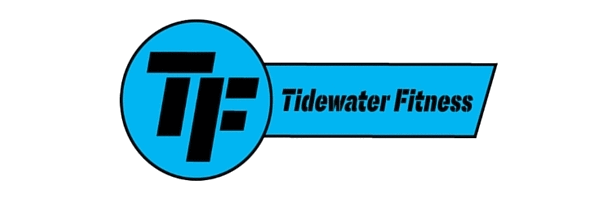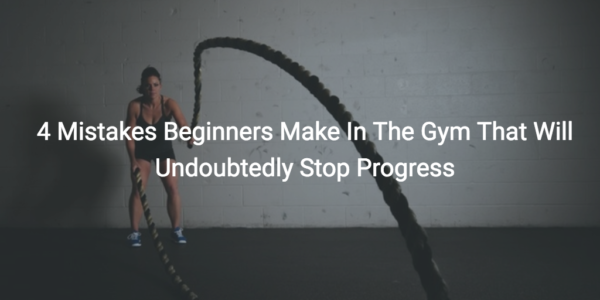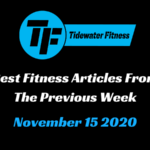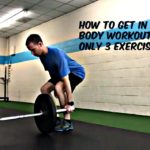Depending on where you’re at in life, a mistake can either be a good or bad thing. On one hand, they help us learn and grow so we can do things better than we did previously. On the other hand, they can hold us back from making progress towards a goal or achievement.
The funny thing is, we’re always more likely to make mistakes when beginning a new task or activity. And this is no different when one begins their fitness journey.
Everyone knows going to the gym offers countless benefits. So that’s always an easy place to start. However, most newbies don’t know that there’s a rhyme and a rhythm to what you actually do when you go to the gym.
While mistakes can provide a positive experience, I’d argue making mistakes in the gym is one of the most frustrating things to go through. Everyone wants to see changes in their body, but few get there quickly. This causes the average gym goer to lose faith and jump ship altogether.
With that in mind, I want to outline 4 mistakes beginners make in the gym that will undoubtedly stop progress. I’ve made these mistakes before so this advice should be taken as “do as I say, not as I’ve done”. 🙂
Let’s get to it!
1. Not warming up properly
Warming up is not only one of the most important things you can do for your body, it’s also one of them most overlooked components of a workout. What many do not know is that a warm up has several purposes. These include:
- Increase core temperature: This serves to improve the elasticity of muscles, which helps improve flexibility.
- Increase blood flow to muscles: This allows more oxygen and nutrients pass through to working muscle tissue thus allowing you to work harder.
- Mobilize your joints: This allows for improved range of motion at joints like the hip and shoulder.
- Prime the abs and glutes: The abs and glutes are two of the main muscle groups that lack strength and endurance in the majority of people. Prepping them in the warm up will serve to improve strength and movement in the workout.
- Lock in movement patterns for the upcoming workout: The warmup is a time where you can practice movement patterns like squatting and hip hinging. This will help make the movements smooth and efficient during the workout.
A good warm up will prepare the body and joints for the stresses placed upon it by lifting weights. Here’s an analogy for you. Think about the difference between an old and new rubber band.
An old rubber band usually has cracks in it and it has lost some of its elasticity. After a while, when you stretch it out, it breaks. A new rubber band is the exact opposite. It’s texture is smooth and you can stretch it all you want but it remains strong and resilient.
A body that warms up properly is like the new rubber band. You can subject it to stress and but the likelihood of it being injured decreases. Those who choose not to warm up are just asking for an injury down the road.
Make sure to add a proper warm up to the beginning of your workouts. You can find out how to do that here.
2. Doing cardio only
If I could label one mistake as the most frustrating I see on a constant basis it’s this one. And I get it. Lifting weights requires practice and technique. Getting on the treadmill and jogging for an hour doesn’t.
The thing is if you want to melt fat and drop a few clothing sizes, low intensity cardio is not your answer. You see, cardio is great at burning calories while you’re exercising. However, it doesn’t help you to build muscle nor burn more calories after exercise.
Interval training and strength training are your best bet here.
Interval training involves alternating periods of hard intensity with easy intensity. The cool thing about this is you’ll burn calories during and after your workout because interval training increases metabolism after exercise. This means you will continue to burn calories while you’re at rest. And more calories burned means better results.
Strength training, on the other side of the coin, is the best thing you can do to build lean muscle. The more muscle mass you have, the more calories you’ll burn on a daily basis meaning you’ll be able to maintain your results easier. Not only that, but muscle is what gives your body shape and definition.
So, the key here is to drop the cardio and opt for interval and strength training instead. If you want more specific information on how you can add these into your routine check this out.
3. Performing single joint exercises
Some beginners actually go to the gym and know that they should emphasize weight training. The only problem is they pick the wrong exercises.
What are wrong exercises? Well, what I mean is, they pick the wrong exercises for their specific goals.
There are two main categories of exercises, single-joint and multi-joint. Single-joint exercises use one joint, like a biceps curl. Multi-joint exercises span across many joints, like a squat. In a squat, the ankles, knees, hips, upper back, shoulders, and elbows are all involved.
In order to burn fat and get lean, you have to prioritize exercises that use the most joints and muscle mass. The reason being, the more muscles you use the more calories you’ll burn.
There’s nothing wrong with doing exercises like biceps curls or skull crushers. They’re just nothing the most effective exercises for producing superior results. Multi-joint exercises like squats, deadlifts, lunges, push ups, and rows should make up the bulk of your workout.
If you want to learn what exercises are best for fat loss go here.
4. Not resting enough or resting too much
Rest is very important. What beginners do not realize is rest allows your body to recover between sets, so you can keep working at a high intensity.
If you aren’t resting at all, you will be forced to lift lighter weights throughout your workout. This doesn’t provide an effective stimulus to create changes in your body. If you’re resting too much, your heart rate won’t remain elevated meaning you’ll burn less calories overall.
Each of these scenarios lower the intensity of your workout. And studies have shown that when intensity is high, your body secretes a lot of growth hormone. This hormone is a huge player in building lean muscle and melting fat.
You want to make sure you are doing everything you can to elevate it. So, use a stop watch and time your rest periods. Rest 30-45 seconds for higher reps (12-15), 60 seconds for moderate reps (6-12) and 120 seconds or more for lower reps (1-6).
Wrapping Up
Getting in the gym is important to your overall success. But anytime you try a new activity, you’re bound to make mistakes. Don’t feel bad though, this is natural.
I want to help you get great results while avoiding these common pitfalls at the gym. Be sure to include a proper warm up, interval training, strength training, and optimal rest periods in your training program and you will be well on your way to getting your ideal body.






